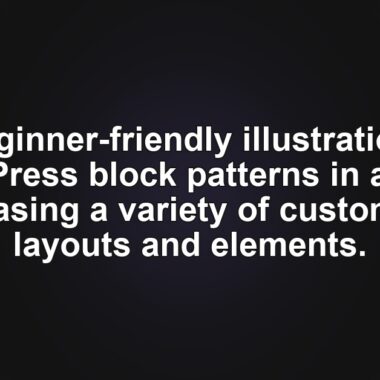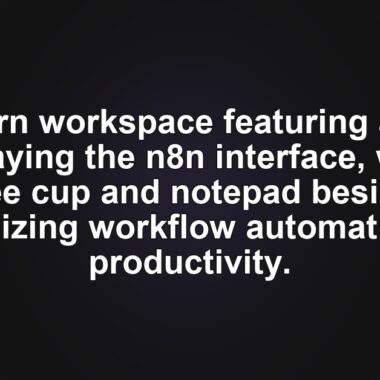Mastering WordPress Speed: Eliminate Render-Blocking JavaScript and CSS
Optimizing your WordPress site speed is crucial for better search engine rankings, and addressing render-blocking JavaScript and CSS is a key part of this process.
Understanding Render-Blocking JavaScript and CSS
When you dive into Google’s PageSpeed Insights, one of the common recommendations is to eliminate render-blocking JavaScript and CSS in above-the-fold content. But what does this mean for your WordPress site?
Above-the-fold content refers to the portion of a webpage that is visible before scrolling. When browsers encounter render-blocking JavaScript and CSS, they may delay rendering this content, leading to slower page loads and potentially impacting user experience and SEO rankings.
Each time you install a new theme or plugin, additional JavaScript and CSS files are added, which can contribute to this issue. Therefore, optimizing these resources is vital for maintaining a fast and efficient website.
Identifying Render-Blocking Resources with Google PageSpeed Insights
To begin addressing render-blocking issues, you need to identify the problematic scripts using Google PageSpeed Insights. Here’s how you can do it:
- Navigate to the Google PageSpeed Insights website.
- Enter your website’s URL and click on “Analyze.”
Once the analysis is complete, you’ll receive a score along with suggestions for improvement. If you see the recommendation to eliminate render-blocking JavaScript and CSS, it’s time to take action.
Remember, while a perfect score is nice, it’s more important to ensure your website provides a great user experience. Don’t sacrifice essential functionality for a slightly higher score.
Effective Plugins for Fixing Render-Blocking JavaScript and CSS
Using W3 Total Cache
The W3 Total Cache plugin is a powerful tool for optimizing your WordPress site. Follow these steps to use it effectively:
- Install and activate the W3 Total Cache plugin from your WordPress dashboard.
- Go to Performance > General Settings, find the Minify section, and enable it. Set the Minify mode to Manual.
- Identify the render-blocking scripts through PageSpeed Insights, then head to Performance > Minify in your dashboard.
- Under the JS section, choose the Non-blocking using “defer” option for the Before <head> tag.
- Add the JavaScript and CSS URLs that were flagged as problematic by PageSpeed Insights.
- Click on Save Settings & Purge Caches to apply your changes.
Optimizing with Autoptimize
Autoptimize is another excellent plugin for addressing render-blocking issues:
- Install and activate Autoptimize from your WordPress dashboard.
- Navigate to Settings > Autoptimize and enable the options for optimizing both JavaScript and CSS.
- After saving your changes, check your site’s speed again with PageSpeed Insights.
- If issues persist, visit the Advanced Settings and enable options for aggregating inline JS and CSS.
- Save changes and re-test your site’s speed.
Speed Booster Pack for Comprehensive Optimization
The Speed Booster Pack plugin offers additional features for tackling render-blocking scripts:
- Access the Speed Booster Pack section in your WordPress admin area and go to the Advanced tab.
- Enable options to move scripts to the footer and defer parsing of JavaScript files.
- In the CSS Optimization menu, experiment with settings like inlining all CSS to find the best configuration.
Be cautious of the Flash of Unstyled Content (FOUC) which can occur if the browser loads the HTML before the CSS.
After applying these optimizations, revisit PageSpeed Insights to ensure that the render-blocking warning is resolved.
If you’re looking for a reliable hosting solution to further enhance your WordPress site’s performance, consider Hostinger. Their services are optimized for speed and reliability, making them a great choice for WordPress users.
Conclusion
Improving the speed of your WordPress site is essential for both user satisfaction and search engine ranking. By eliminating render-blocking JavaScript and CSS, you can significantly enhance your site’s loading times.
Using plugins like W3 Total Cache, Autoptimize, and Speed Booster Pack can simplify this process, allowing you to focus on creating great content rather than technical details. Remember, the goal is to create a fast, functional, and user-friendly site.
We hope this guide helps you on your journey to a faster WordPress site. If you have any questions or need further assistance, feel free to leave a comment below. Good luck!
Starter-Pack HTML Section
WordPress Hooks
How to Add Custom CSS in WordPress
WordPress Tutorial
How to Edit HTML in WordPress
WordPress REST API
Become a WordPress Developer
Domantas G.
Domantas leads the content and SEO teams forward with fresh ideas and out of the box approaches. Armed with extensive SEO and marketing knowledge, he aims to spread the word of Hostinger to every corner of the world. During his free time, Domantas likes to hone his web development skills and travel to exotic places.
👉 Start your website with Hostinger – get fast, secure hosting here 👈
🔗 Read more from MinimaDesk:
- How to Disable xmlrpc.php in WordPress: A Step-by-Step Guide
- Mastering the WP-Content Directory in WordPress
- The Ultimate Guide to WP-Content: Access, Upload, and Hide Your WordPress Directory
- How Many WordPress Plugins Are Too Many? Optimize Your Site for Success
🎁 Download free premium WordPress tools from our Starter Tools page.








